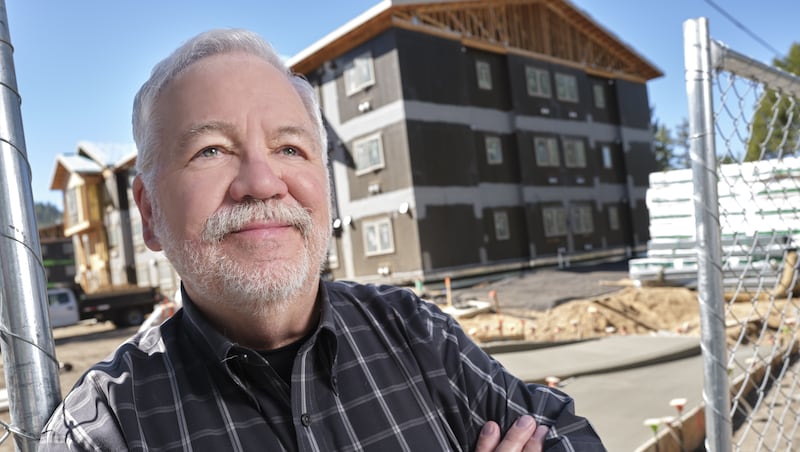Amelia Richmond arrived at the apartment complex in South Lake Tahoe to gather signatures for a proposed vacancy tax initiative aimed at addressing the community’s significant housing crisis. Despite an initial lack of interest from residents, Richmond persistently explained the proposal’s aim to tax properties that remain vacant for over six months annually, which constitutes 44% of local housing units. This initiative seeks to generate funds for affordable housing, road repairs, and public transit, ensuring that current residents, who struggle with the high cost of living in a tourist-centric economy, aren’t overburdened while allowing the city to generate necessary income to tackle pressing needs.
South Lake Tahoe is emblematic of many mountain resort towns where tourism is the primary economic driver. With soaring property prices—evidenced by a median sales price for single-family homes at $655,950—the local workforce finds it increasingly difficult to compete against out-of-town buyers investing in second homes. This disparity has profound consequences, including a significant decrease in full-time residents and underfunded local schools, emphasizing the need for housing solutions that can accommodate those who work in the area. The community’s demographic shift is underscored by the fact that many residents live outside the basin, often enduring long commutes for work.
The conflict between serving the influx of visitors and sustaining a local population is central to South Lake Tahoe’s identity crisis. Hal K. Rothman’s work highlights this paradox, illustrating how the very tourism that fuels the economy simultaneously contributes to the degradation of local cultural and environmental resources. This trend is observable across other mountain towns in the West, with areas such as Park City, Utah, facing similar challenges of empty homes and misaligned housing markets. Richmond’s proposed tax is a response to this growing frustration, as it aims to shift market dynamics and provide tangible benefits for both long-term residents and local infrastructure projects.
As Richmond continued her campaign, the ballot initiative gained momentum, eventually being labeled Measure N. However, it also triggered a backlash from property owners, evidenced by organized opposition. The resistance included influential local organizations such as the chambers of commerce and real estate associations, who argued that the measure would threaten the viability of second homes and private property. Letters encouraging illegal voter registrations also surfaced, revealing attempts to sway the election process in favor of property owners, highlighting the tensions brewing within the community.
Public meetings grew contentious as divergent views collided; supporters shared personal grievances over the housing crisis, while opponents expressed attachment to family-owned vacation properties. Leading the opposition was Duane Wallace, who framed the debate as one that fundamentally concerns community values and family heritage. Opponents like Steve Teshara from the Tahoe Chamber emphasized the need for more sustainable solutions that require ongoing engagement rather than a quick fix through taxation. They argued that the economic contribution of second homeowners to local businesses should not be overlooked among the frustrations of residents struggling to find adequate housing.
Despite these opposing viewpoints, advocates for Measure N maintained their focus on the urgency of the housing crisis. For locals like Sierra Riker and Roderick Martin, who faced enormous challenges in obtaining affordable housing, the urgency of intervention is paramount. As the election approaches, the debate around Measure N serves as a microcosm of the broader tensions existing in resort communities across the American West, revealing the intricacies of balancing economic vitality driven by tourism with the pressing necessity to maintain a working community that thrives year-round. With significant challenges ahead, the future of South Lake Tahoe—a place defined by its scenic landscape and recreational opportunities—rests on how effectively its residents can negotiate these complex issues.

